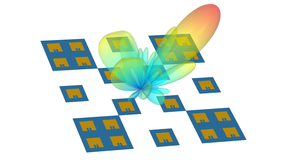Defence of doctoral thesis in the field of Signal Processing Technology, DI Robin Rajamäki

When
Where
Event language(s)
Multisensor systems are a key enabling technology in, e.g., radar, sonar, medical imaging, localization, radio astronomy, and wireless communications. The main advantage of using multiple sensors is the ability to enhance spatial resolution by forming highly directive spatial beams on transmission or reception. Furthermore, the quality of the acquired data is significantly improved by reducing noise and rejecting unwanted interferences.
Conventional multisensor systems employ a simple array of uniformly spaced sensors. However, a dense uniform sensor array spanning a large physical area may become prohibitively expensive, as many sensors and corresponding costly electronics are needed. In contrast, sparse sensor arrays require drastically fewer sensors to achieve comparable performance, e.g., in terms of spatial resolution. Hence, sparse arrays are relevant in sensing applications where cost-efficiency or the weight of the array is critical, as in drones.
This dissertation introduces novel sparse array designs and signal processing methods for active sensing and imaging. The thesis derives new linear and rectangular sparse array configurations that can be scaled to practically any physical size or number of sensors. Furthermore, previously unknown optimal configurations are computed. The developed sparse arrays can resolve vastly more scatterers or targets than the number of sensors, unlike conventional uniform arrays. They also allow for synthesizing spatial beampatterns that are conventionally achieved by uniform arrays only.
Moreover, the thesis develops a previously established sparse array imaging method, where image quality is improved by summing multiple component images. The component images may correspond to separate transmissions and receptions depending on the employed multisensor system architecture. The thesis analyzes the influence of the array configuration and architecture on the number of component images required to achieve a desired image quality. The dissertation also proposes methods for reducing the image acquisition time by minimizing the number of component images.
The contributions of the thesis are of value in the design of sparse sensor arrays for both active and passive sensing. Several novel sparse array configurations and beamforming algorithms are developed. The results facilitate cost-efficient and fast imaging using a provably close-to-minimum number of sensors and transmission-receptions.
Opponent: Professor Geert Leus, TU Delft, The Netherlands
Custos: Professor Visa Koivunen, Aalto University School of Electrical Engineering, Department of Signal Processing and Acoustics
Contact details of the doctoral student: [email protected]
The defence will be organised via remote technology (Zoom). Link to the defence
The doctoral thesis will be publicly displayed 10 days before the defence in the Aaltodoc publication archive of Aalto University.
- Published:
- Updated: